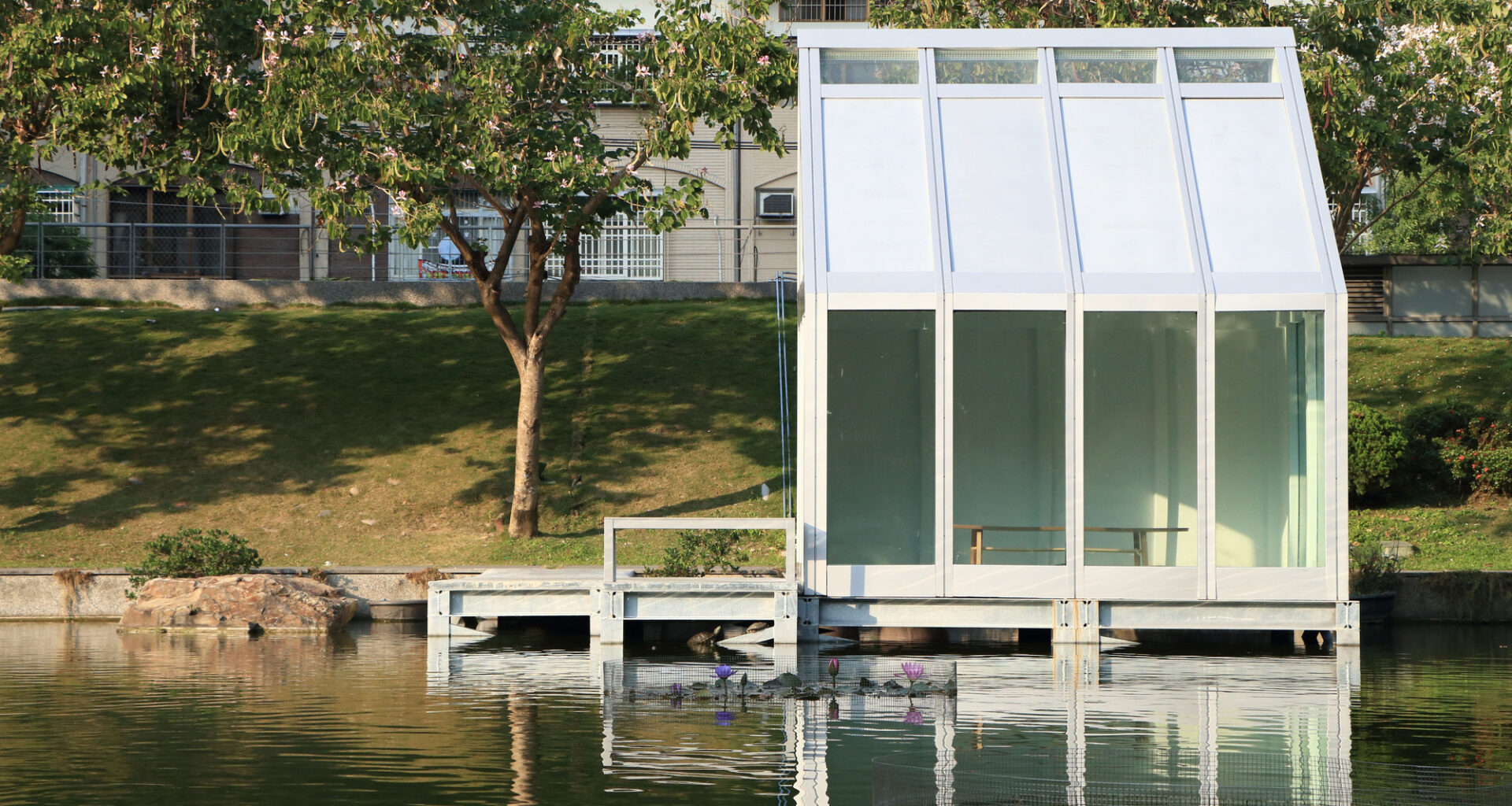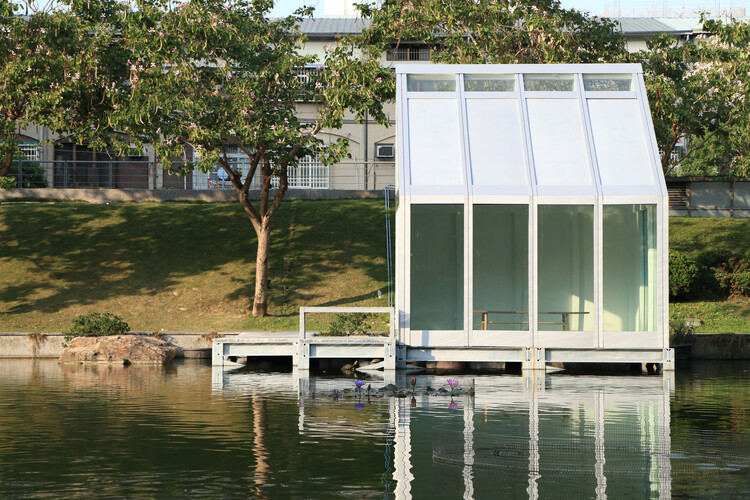 Water House 2.0 in Taichung, Taiwan, WFG Built Project. Image © Matyas Gutai
Water House 2.0 in Taichung, Taiwan, WFG Built Project. Image © Matyas Gutai
Share
Share
Or
https://www.archdaily.com/1033261/pylon-of-permanence-showcases-water-filled-glass-at-the-venice-architecture-biennale-2025
At the 2025 Venice Architecture Biennale, the installation Pylon of Permanence presents Water-Filled Glass (WFG), a glazing system developed to address the environmental impact of glass in the built environment. Although glass is one of the most widely used construction materials, its embodied and operational carbon footprint surpasses that of concrete, steel, and brick. Water-Filled Glass proposes an alternative approach by transforming glass from a passive enclosure into an active energy regulator.
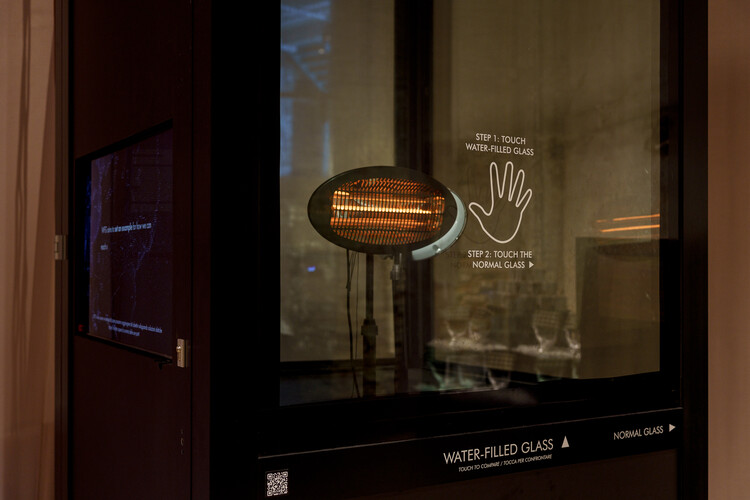 Pylon of Permanence installation at the 2025 Venice Architecture Biennale. Image © Andrea Avezzù, Courtesy of la Biennale di Venezia
Pylon of Permanence installation at the 2025 Venice Architecture Biennale. Image © Andrea Avezzù, Courtesy of la Biennale di Venezia Pylon of Permanence installation at the 2025 Venice Architecture Biennale. Image © Andrea Avezzù, Courtesy of la Biennale di Venezia
Pylon of Permanence installation at the 2025 Venice Architecture Biennale. Image © Andrea Avezzù, Courtesy of la Biennale di Venezia
The system is based on a thin layer of circulating water contained within the glass panel. This water absorbs solar radiation, stores or redistributes heat through the building’s mechanical systems, and helps stabilize interior temperatures. Rather than relying on static insulation to resist energy transfer, Water-Filled Glass works through continuous thermal exchange. The principle recalls the thermal control methods used in aerospace, where movement and redistribution maintain equilibrium.
The concept was initiated by Dr. Mátyás Gutai at The University of Tokyo, under Professors Kazuhiko Namba and Kengo Kuma, and has since been furthered by a multidisciplinary team including Hydro Building Systems. Research has focused not only on the performance of the panels but also on potential applications within existing building stock. One of the system’s key proposed uses is in retrofitting. Installed as a secondary skin, Water-Filled Glass can reduce operational energy demands with limited disruption to occupants or structure. According to the research team, widespread implementation could reduce annual emissions by over 500 million tons.
Related Article The German Pavilion Tests Urban Limits in a Warmer World at the 2025 Venice Architecture Biennale 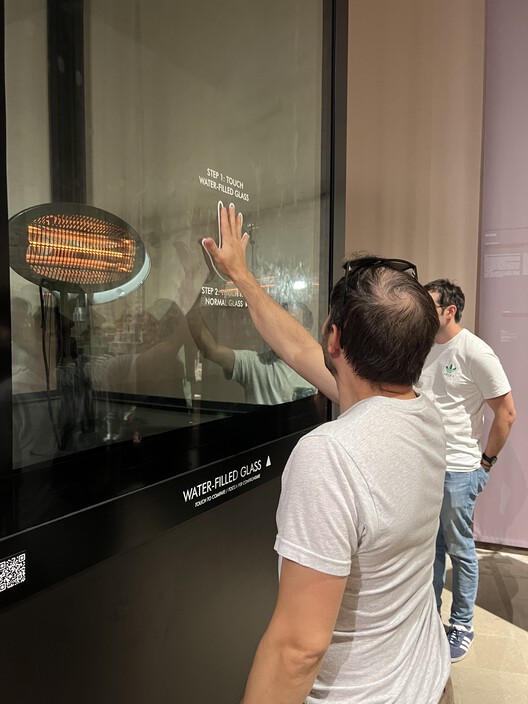 Pylon of Permanence installation at the 2025 Venice Architecture Biennale. Image © Matyas Gutai
Pylon of Permanence installation at the 2025 Venice Architecture Biennale. Image © Matyas Gutai
The Pylon of Permanence installation at the Arsenale demonstrates this principle at an architectural scale: tall Water-Filled Glass panels interact with radiant heat, making visible the process of fluid-driven thermal regulation. An accompanying video outlines the scientific foundations of the technology, drawing on research that links the system’s operation to natural climate processes, where mass, insulation, and water distribution collectively balance energy flows.
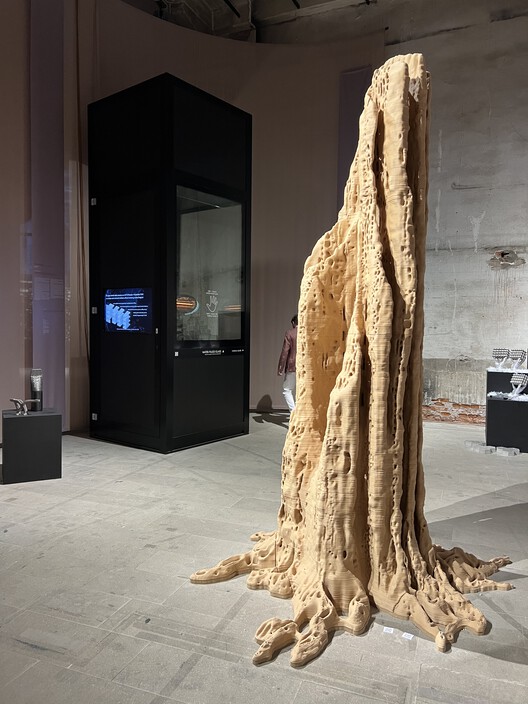 Pylon of Permanence installation at the 2025 Venice Architecture Biennale. Image © Matyas Gutai
Pylon of Permanence installation at the 2025 Venice Architecture Biennale. Image © Matyas Gutai
Recognized as one of the world’s most significant architectural events, the Venice Architecture Biennale serves as a platform for architects and designers to test new ideas and engage in global dialogue. Open to visitors until November 23, the 2025 edition features over 300 contributions from more than 750 participants, alongside 65 national pavilions. Curated by Carlo Ratti, the Biennale explores the theme “Intelligens. Natural. Artificial. Collective.”
We invite you to check out ArchDaily’s comprehensive coverage of the 2025 Venice Biennale.
